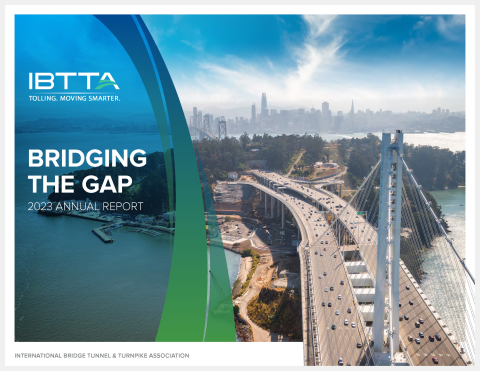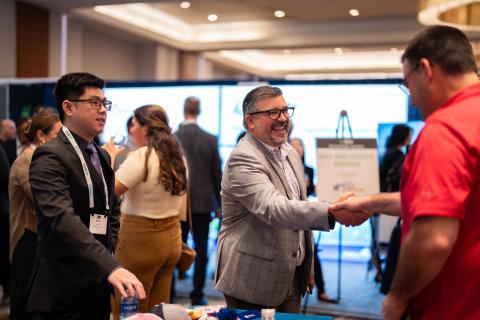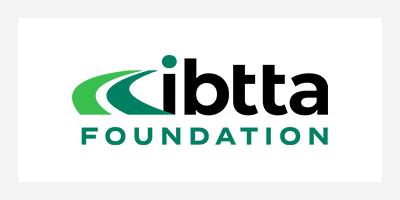- Home
- IBTTA Insights
- Relationships, Momentum, and Patience: Heiligenstein Traces Four Decades of Achievement
Stories
Relationships, Momentum, and Patience: Heiligenstein Traces Four Decades of Achievement


Mike Heiligenstein officially steps down from CTRMA
Mike Heiligenstein has been a distinguished leader in local government, surface transportation, and infrastructure since he was first elected to public office in Central Texas in 1980. Last week, he officially retired as executive director of the Central Texas Regional Mobility Authority after 17 years at the helm, one of the longest tenures in North American at the same agency. In this special interview with Tolling Points, he traces a career of achievement, innovation, and public service, and drops some interesting hints about what’s next.
What were the early influences that got you interested in transportation infrastructure and finance?
It started early in my childhood, when I really enjoyed the idea of watching my father, as a County Board Member in Illinois, deal with roadway issues. My family’s elective involvement with politics and political service went back almost a century, so that’s where it began. So, coming from a legacy of involvement, my dedication to infrastructure and community betterment is in my DNA.
How did those interests shape your decision to run for elected office?
After earning two master’s degrees from The University of Texas, one in government and one in business, and as I said growing up in a family that had served in local government, I always thought participating in government was the highest form of public service. I never had a notion that I wasn’t going to be involved. I knew it was where I would find my calling.
What were your biggest achievements while you were in office?
There really wasn’t a single, distinct item. I served as a public official for 23 years. From 1980 to 1987 as City Councilman in Round Rock, TX and from 1989 to 2003 as a County Commissioner of Williamson County, TX. What was really important was the regional perspective Round Rock and Williamson County played in the bigger picture of Central Texas, which was growing so fast, and bringing that to bear on our needs, as communities. I believed that committing to a regional perspective of collaboration amongst all our regional cities and counties, no matter the size, was critical to the success of all.
I am most proud of the passage of a $375-million bond package for a county of just 212,000 people at the time (it is now well over half million). That’s $1,500 per capita, and it was a huge deal that helped us jump-start a lot of things in the county. It helped us bring in Dell Computer in 1996, which was an incredible win for Round Rock. The bulk of the bond issue was dedicated to roads and parks.
Another big accomplishment was the foresight and preservation of parkland. In two separate cases, the city and county each purchased about 500 acres. So now we have over 1,500 acres of parkland that were never really contemplated but turned out to be so important to our quality of like. That land would have been swallowed up by development had we not acted quickly. I pushed that at the local level because I thought we needed the parkland set aside before the area was developed.
Round Rock had a population of 11,800 when I was first elected to council in 1980, today it has a population of 134,000 with the second-largest school district in the whole region. That’s just dramatic growth.
Did that parkland help attract major local employers like Dell?
It’s certainly one of the attributes, absolutely. There’s a checklist of things they’re looking for—quality of life, cultural options, tax incentives, and having one of the best school districts in the state. At that time, Dell was looking for places to go with their world headquarters. Austin is not the headquarters, although it likes to think it is. But absolutely, having the 500 acres, which then brought in the group that brought us AAA baseball, The Round Rock Express, things got jump-started in that time from 1980 to 1990 and really took off.
How did you make the transition from an elected official to lead CTRMA?
We had just begun implementing the huge road bond package we had passed in 2000, to be implemented over the next 10 years. It was an opportunity to take what had been learned from a regional perspective, build on the relationships across the region, and apply it to this new agency that had just been created by the Texas Legislature.
What were those early days like, building a new regional tolling authority from the ground up?
Oh my god, it was excruciating. I thought I was going from a county government that had seen quite a few challenges, to a regional agency that would be fully accepted, where the need for mobility solutions was obvious. That was the belief back in the day—that there simply wasn’t enough money to go around, and everyone would simply accept that tolling is the future. Think again!
It didn’t take very long for reality to set in. As the only employee of the CTRMA, it was tough. There was a lot of opposition, and at first we didn’t understand public outreach and the need to do that in a very comprehensive, citizen-oriented manner. That was one of the biggest lessons I learned. In fact, that is what drove my decision to brand my 2014 IBTTA presidency as the year of the “Customer and Collaboration”
I knew communications would be a challenge. After 22 years in public office, I thought I was ready. But not one thing in the political world prepared me for the tolling world, where facts didn’t matter to the opposition. A small faction was down on tolling (they saw themselves as getting something free), and they were going to do whatever they could to stop it, whether their statements were true or not. It was the first wave of fake news, and it was really difficult to go through—particularly for the board, who didn’t deserve that as volunteers.
But we got through it. The opening of the first project was probably the biggest thing that turned things around for CTRMA. Once it was up and operating, it was a success. People began to see how tolling worked and the benefits to the community. Time savings became understood in a region drowning in congestion.
How did you navigate the anti-tolling opposition?
There were a lot of neighborhood meetings with huge crowds of engaged residents, some angry and in strong opposition and some who wanted to learn about the new asset in their community. It was always a huge challenge because people didn’t understand why something we’d just built that they’d waited 15 years for was now going to be tolled. So, the challenge was staying the course, sticking to the facts, and understanding what a tolling system could mean for the future of the region. As Tip O’Neil said, “all politics is local” and that lesson had to be learned and relearned. Speak with your customer, not “to” him or her.
The other common thread was that our regional relationships were strong enough to overcome the opposition. The elected officials in the region were really getting nervous, but we had a little bit of time to get it turned. My established relationships bore fruit and leaders showed incredible patience. The politicians were getting scorched, but just enough of them were willing to trust the relationship and the prospect of a better future.
It was really critical to sustain our momentum and patience and make sure we didn’t take things personally. There were so many times when I bit my tongue. As a former public official, I knew how to organize, but I also knew there would be a lot of blowback. So, in the moment, it was important to help our staff understand why public officials needed a lot of information and cover. They became our advocates, and we became their trusted advisors. And we’re still doing that.
What were some of your biggest achievements and proudest moments?
Opening projects. Networking across the region. And creating a transportation and tolling system where none existed. Remember, Central Texas had no tolling in 2002 and now the RMA has over $2.5 Billion in assets, and another billion or so coming soon. It was about the process of building relationships, support, and credibility. I called it credibility and creditability. When the financial markets started knocking on our door and saying we were doing things right, that was a big ah-ha moment that our efforts were paying off.
The relationships and the financial credibility were both huge, and today we’re at the point where we’re asked to do projects.
When did you first become involved in IBTTA?
In 2003, I understood early on that this was an organization I needed to be a part of it—or, actually, the only organization I needed to be a part of. Instantly, I got hooked. I started taking away critical information and elements around electronic tolling, safety, and public involvement. It was rudimentary compared to what IBTTA offers today, but their outreach in the early 2000s was one of the best, and it’s gotten much, much better.
As I mentioned, my theme for my year as IBTTA President in 2014 was Customers and Collaboration, with a heavy emphasis on customers. As an agency and an organization, I felt we needed to re-envision the way we thought about our clientele. Too often when we talk about tolling, we assume everyone will understand and love it, and we can get into a mindset where we assume the tolling industry is just a gift to solve the issues with surface transportation. Putting customers first is a way to address the significant communication challenges that we will continue to face.
IBTTA has been such a big influence on my career in the last 17 years at the Regional Mobility Authority. You can never learn in a classroom what you can learn by working with your peers. It’s just amazing. I look forward to continuing to work with IBTTA as a past president. Our new president, Marc Compton is actively engaging the past presidents and challenging them to get off their legacies and be part of the future – to mentor the next generation of transportation leaders.
One of the few certainties in an uncertain world is that Mike Heiligenstein will not sit still. What challenges do you plan to take on next?
I plan to move on to an advisory position on projects at the state and local level, focusing more on the big picture and less in the trenches. Early in my career as an elected official I was involved in water and wastewater issues especially through the National Association of Counties and National League of Cites, so now I’ll be taking a broader approach to infrastructure and getting involved with ever more challenging and interesting projects.
Is there anything you’d like to add?
It was never just about me. We’ve been able to attract really great, exceptional staff and create a pre-eminent tolling agency that really does recognize customers. Its amazing to think of all the professionals that left jobs in the private sector to begin a new career with a start-up. Think of the risk they were taking! It shows up in the way we communicate, which is critical, because nobody took anything for granted. So, it’s the communications and community outreach, the financing, the operations, the engineering, the customer service —all the elements that have to work together to make a tolling agency a standout success. Combine that with incredible boards of directors and you have a recipe for success. I would like to think I have contributed the glue for what has ultimately become a very successful agency.
___________________________________________________________________________________
IBTTA wishes Mike, Lisa and his family all the best. Best wishes, not goodbye.

Joining IBTTA connects you to a global community of transportation professionals, offering unmatched opportunities for networking, knowledge-sharing, and collaborative innovation in the tolling and transportation sector.
Follow IBTTA on social media for real-time updates on transportation trends and collaborative opportunities.





